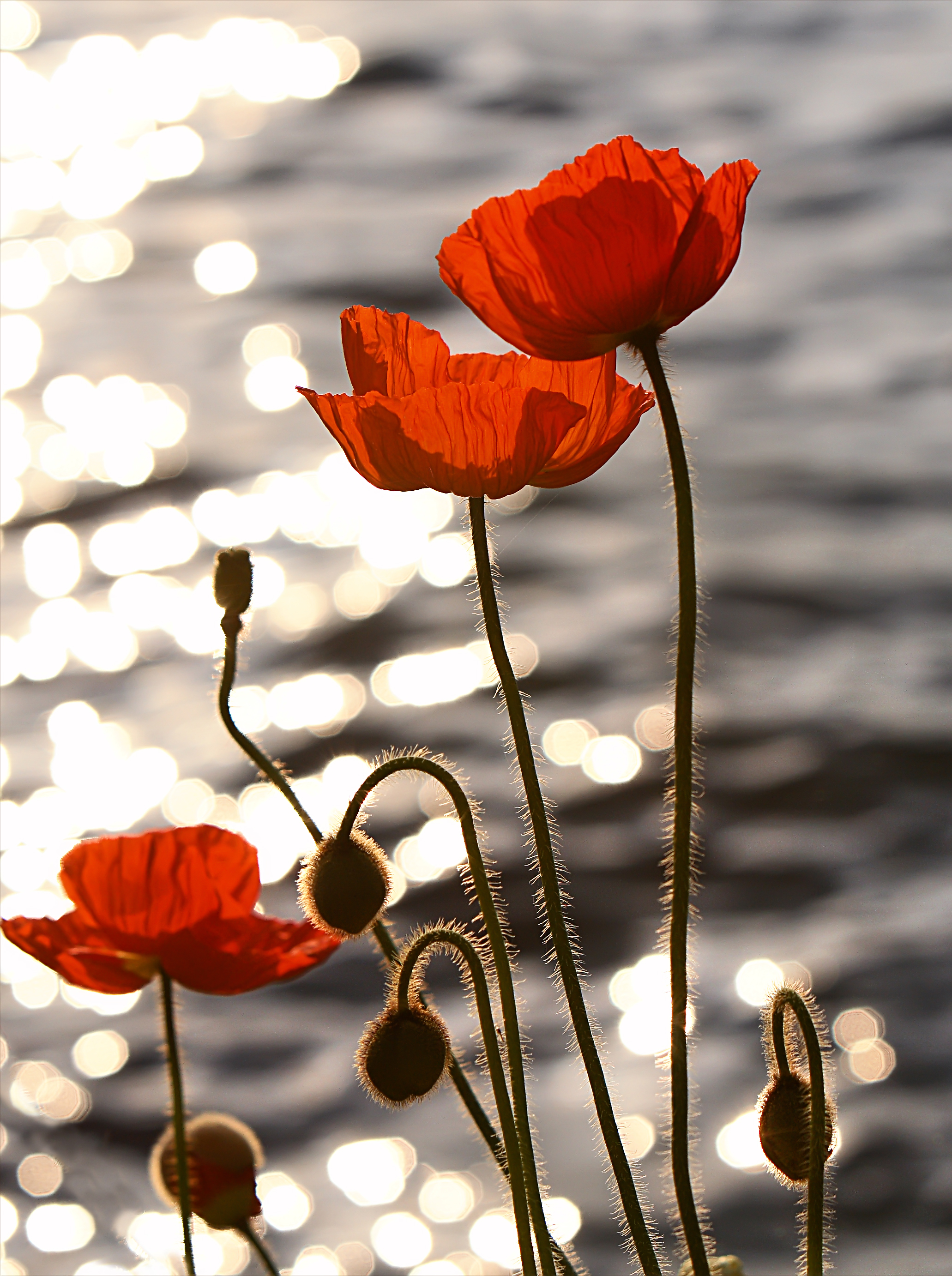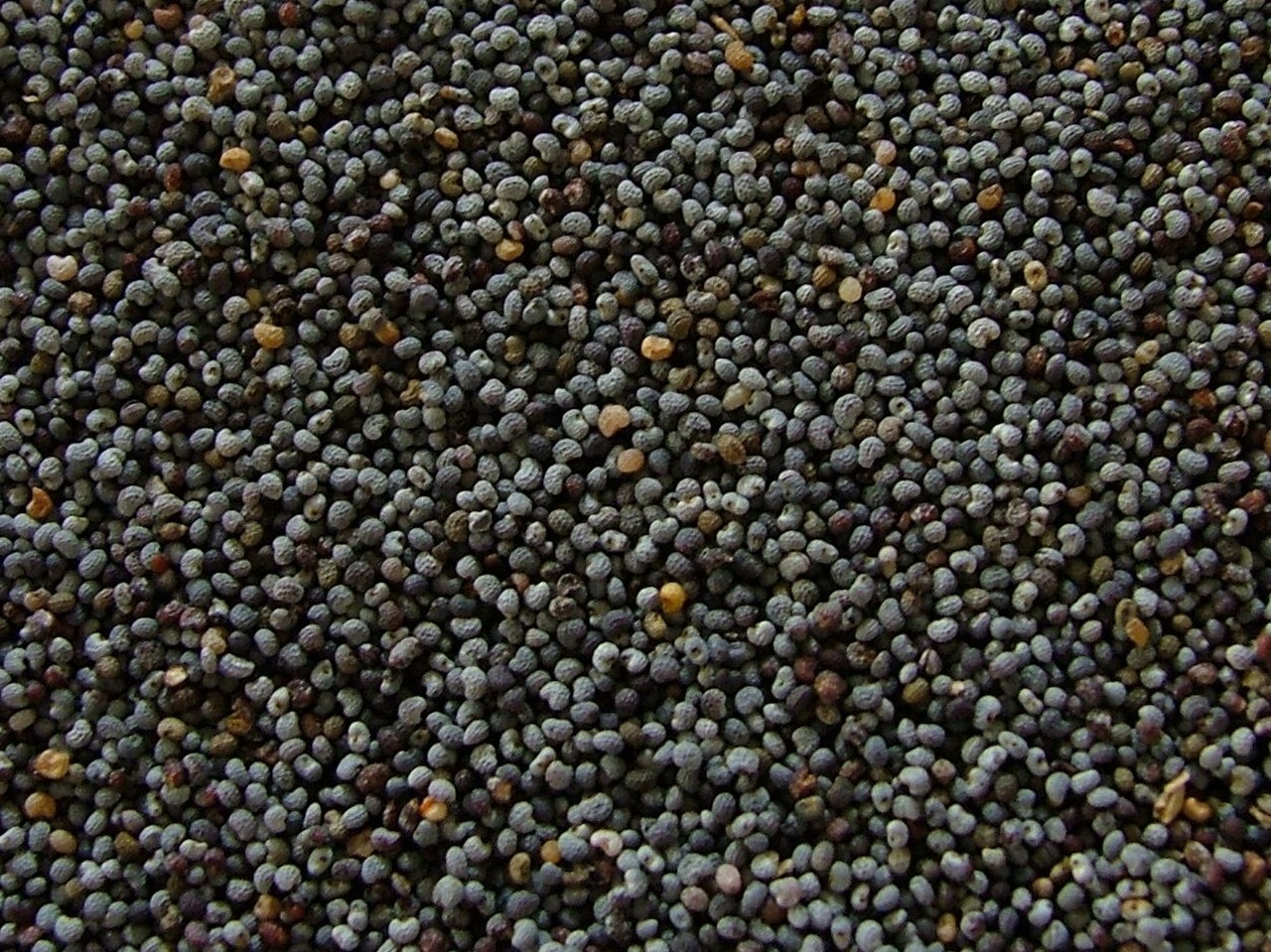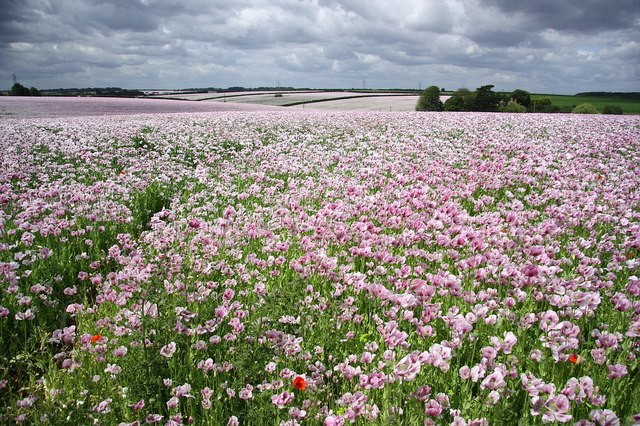|
Poppy
A poppy is a flowering plant in the subfamily Papaveroideae of the family Papaveraceae. Poppies are herbaceous plants, often grown for their colourful flowers. One species of poppy, ''Papaver somniferum'', is the source of the narcotic drug opium which contains powerful medicinal alkaloids such as morphine and has been used since ancient times as an analgesic and narcotic medicine, medicinal and recreational drug. It also produces Poppy seed, edible seeds. Following the trench warfare in the poppy fields of Flanders, Belgium during World War I, poppies have become a symbol of Remembrance Day, remembrance of soldiers who have died during wartime, especially in the UK, Canada, Australia, New Zealand and other Commonwealth realms. Description Poppies are herbaceous plant, herbaceous Annual plant, annual, Biennial plant, biennial or short-lived Perennial plant, perennial plants. Some species are monocarpic, dying after flowering. Poppies can be over a metre tall with flowers up to 1 ... [...More Info...] [...Related Items...] OR: [Wikipedia] [Google] [Baidu] |
Poppy Seed
Poppy seed is an oilseed obtained from the opium poppy (''Papaver somniferum''). The tiny, kidney-shaped seeds have been harvested from dried seed pods by various civilizations for thousands of years. It is still widely used in many countries, especially in Central Europe and South Asia, where it is legally grown and sold in shops. The seeds are used whole or ground into meal as an ingredient in many foods – especially in pastry and bread – and they are pressed to yield poppyseed oil. History The poppy seed is mentioned in ancient medical text from many civilizations. For instance, the Egyptian papyrus scroll named Ebers Papyrus, written c. 1550 BC, lists poppy seed as a sedative. The Minoan civilization (approximately 2700 to 1450 BC), a Bronze Age civilization which arose on the island of Crete, cultivated poppies for their seed, and used a milk, opium and honey mixture to calm crying babies. The Sumerians are another civilization that are known to have grown poppy seeds ... [...More Info...] [...Related Items...] OR: [Wikipedia] [Google] [Baidu] |
Papaver Somniferum
''Papaver somniferum'', commonly known as the opium poppy or breadseed poppy, is a species of flowering plant in the family Papaveraceae. It is the species of plant from which both opium and poppy seeds are derived and is also a valuable ornamental plant, grown in gardens. Its native range is probably the eastern Mediterranean, but is now obscured by ancient introductions and cultivation, being naturalized across much of Europe and Asia. This poppy is grown as an agricultural crop on a large scale, for one of three primary purposes. The first is to produce seeds that are eaten by humans, commonly known as poppy seed. The second is to produce opium for use mainly by the pharmaceutical industry. The third is to produce other alkaloids, mainly thebaine and oripavine, that are processed by the pharmaceutical industry into drugs such as hydrocodone and oxycodone. Each of these goals has special breeds that are targeted at one of these businesses, and breeding efforts (including biot ... [...More Info...] [...Related Items...] OR: [Wikipedia] [Google] [Baidu] |
Opium
Opium (or poppy tears, scientific name: ''Lachryma papaveris'') is dried latex obtained from the seed capsules of the opium poppy ''Papaver somniferum''. Approximately 12 percent of opium is made up of the analgesic alkaloid morphine, which is processed chemically to produce heroin and other synthetic opioids for medicinal use and for the illegal drug trade. The latex also contains the closely related opiates codeine and thebaine, and non-analgesic alkaloids such as papaverine and noscapine. The traditional, labor-intensive method of obtaining the latex is to scratch ("score") the immature seed pods (fruits) by hand; the latex leaks out and dries to a sticky yellowish residue that is later scraped off and dehydrated. The word '' meconium'' (derived from the Greek for "opium-like", but now used to refer to newborn stools) historically referred to related, weaker preparations made from other parts of the opium poppy or different species of poppies. The production methods have ... [...More Info...] [...Related Items...] OR: [Wikipedia] [Google] [Baidu] |
Remembrance Day
Remembrance Day (also known as Poppy Day owing to the tradition of wearing a remembrance poppy) is a memorial day observed in Commonwealth member states since the end of the First World War to honour armed forces members who have died in the line of duty. Following a tradition inaugurated by King George V in 1919, the day is also marked by war remembrances in many non-Commonwealth countries. In most countries, Remembrance Day is observed on 11 November to recall the end of First World War hostilities. Hostilities formally ended "at the 11th hour of the 11th day of the 11th month" of 1918, in accordance with the armistice signed by representatives of Germany and the Entente between 5:12 and 5:20 that morning. ("At the 11th hour" refers to the ''passing'' of the 11th hour, or 11:00 am.) The First World War officially ended with the signing of the Treaty of Versailles on 28 June 1919. The tradition of Remembrance Day evolved out of Armistice Day. The initial Armist ... [...More Info...] [...Related Items...] OR: [Wikipedia] [Google] [Baidu] |
Papaveraceae
The Papaveraceae are an economically important family of about 42 genera and approximately 775 known species of flowering plants in the order Ranunculales, informally known as the poppy family. The family is cosmopolitan, occurring in temperate and subtropical climates (mostly in the northern hemisphere), but almost unknown in the tropics. Most are herbaceous plants, but a few are shrubs and small trees. The family currently includes two groups that have been considered to be separate families: Fumariaceae and Pteridophyllaceae. Description The plants may be annual, biennial, or perennial. Usually herbaceous, a few species form shrubs or evergreen trees. They are lactiferous, producing latex, which may be milky or watery, coloured or plain. All parts contain a well-developed duct system (these ducts are called "laticifers"), producing a milky latex, a watery white, yellow or red juice. The simple leaves are alternate or sometimes whorled. They have petioles and are not enc ... [...More Info...] [...Related Items...] OR: [Wikipedia] [Google] [Baidu] |
Papaver Nudicaule
''Papaver nudicaule'', the Iceland poppy, is a boreal flowering plant. Equivalence with ''Papaver croceum'' has been contested. Native to subpolar regions of Asia and North America, and the mountains of Central Asia as well as temperate China (but not in Iceland), Iceland poppies are hardy but short-lived perennials, often grown as biennials, that yield large, papery, bowl-shaped, lightly fragrant flowers supported by hairy, curved stems among feathery blue-green foliage 1-6 inches long. They were first described by botanists in 1759. The wild species blooms in white or yellow, and is hardy from USDA Zones 3a-10b. The Latin specific epithet ''nudicaule'' means “with bare stems”. Cultivars Cultivars come in shades of yellow, orange, salmon, rose, pink, cream and white as well as bi-colored varieties. Seed strains include: ‘Champagne Bubbles’ (15-inch plants in orange, pink, scarlet, apricot, yellow, and creamy-white); ‘Wonderland’ (10-inch dwarf strain wi ... [...More Info...] [...Related Items...] OR: [Wikipedia] [Google] [Baidu] |
Papaver
''Papaver'' is a genus of 70–100 species of frost-tolerant annuals, biennials, and perennials native to temperate and cold regions of Eurasia, Africa and North America. It is the type genus of the poppy family, Papaveraceae. Description The flowers have two sepals that fall off as the bud opens, and four (or up to six) petals in red, pink, orange, yellow, or lilac. There are many stamens in several whorls around a compound pistil, which results from the fusion of carpels. The stigmas are visible on top of the capsule, and the number of stigmas corresponds to the number of fused carpels. The ovary later develops into a dehiscing capsule, capped by the dried stigmas. The opened capsule scatters its numerous, tiny seeds as air movement shakes it, due to the long stem. The typical ''Papaver'' gynoecium is superior (the flower is hypogynous) with a globular ovary. The style is characteristically absent for the type species opium poppy, and several others, although those wi ... [...More Info...] [...Related Items...] OR: [Wikipedia] [Google] [Baidu] |
Poppies In The Sunset On Lake Geneva
Poppies can refer to: *Poppy, a flowering plant *The Poppies (other) - multiple uses *''Poppies (film)'' - Children's BBC remembrance animation *"Poppies", a song by Patti Smith Group from their 1976 album ''Radio Ethiopia'' *"Poppies", the first track on the debut album by Marcy Playground. * Remembrance poppy, commemorates soldiers who have died in war; mainly used in current and former Commonwealth states. See also * Poppy (other) * Poppy & the Jezebels, a pop band in the UK * Poppy Factory (band) Poppy Factory were an English indie rock band from Bradford, England, signed to Chrysalis Records. They released one EP and three singles. Their debut, the ''Fabulous Beast'' EP, met critical acclaim and was played by a number of radio DJs and ..., a band from Bradford, England {{disambig [Baidu] |
Papaver Rhoeas
''Papaver rhoeas'', with common names including common poppy, corn poppy, corn rose, field poppy, Flanders poppy, and red poppy, is an annual herbaceous species of flowering plant in the poppy family Papaveraceae. It is a temperate native with a very wide distribution area, from Africa to temperate and tropical Asia and Europe. It is regarded as an agricultural weed (hence the common names including "corn" and "field"). As the plant thrives in areas of disturbed soil, it was often abundant in agricultural fields before the advent of herbicides. Flushes of poppies may still appear in fields where herbicides are not used, as well as those in fallow. The corn poppy and its cultivars such as the Shirley poppy are widely grown in gardens, and are frequently found in packets of seed labelled "wildflower mixes". Since World War I, it has been used in the Commonwealth as a symbol of remembrance for fallen soldiers. Description ''Papaver rhoeas'' is a variable, erect annual, fo ... [...More Info...] [...Related Items...] OR: [Wikipedia] [Google] [Baidu] |
Morphine
Morphine is a strong opiate that is found naturally in opium, a dark brown resin in poppies (''Papaver somniferum''). It is mainly used as a analgesic, pain medication, and is also commonly used recreational drug, recreationally, or to make other illicit drug, illicit opioids. There are numerous methods used to administer morphine: oral; sublingual administration, sublingual; via inhalation; intramuscular, injection into a muscle; by Subcutaneous injection, injection under the skin; intravenously; Intrathecally, injection into the space around the spinal cord; transdermal; or via rectal administration, rectal suppository. It acts directly on the central nervous system (CNS) to induce analgesia and alter perception and emotional response to pain. Physical and psychological dependence and tolerance may develop with repeated administration. It can be taken for both acute pain and chronic pain and is frequently used for pain from myocardial infarction, kidney stones, and during Ch ... [...More Info...] [...Related Items...] OR: [Wikipedia] [Google] [Baidu] |
Papaver Orientale
''Papaver orientale'', the Oriental poppy, is a perennial flowering plant native to the Caucasus, northeastern Turkey, and northern Iran. Oriental poppies grow a mound of leaves that are hairy and finely dissected in spring. They gather energy and bloom in mid-summer. After flowering the foliage dies away entirely, a property that allows their survival in the summer drought of Central Asia. Gardeners can place late-developing plants nearby to fill the developing gap. Cultivation ''Papaver orientale'' usually thrives in soil pH 6.5 to 7.5 and in full sun or part shade. Seeds are sown after the potential of frost has passed, the average temperature is approximately 21 °C and when soil has thoroughly warmed. The seeds are sown at a depth of about one centimeter, or less as light may stimulate germination. Oriental Poppies do not handle transplanting or over-watering well. Germination period is 10–20 days. Mulch can be used to protect the plant over the winter and d ... [...More Info...] [...Related Items...] OR: [Wikipedia] [Google] [Baidu] |
Pollen Source
The term pollen source is often used in the context of beekeeping and refers to flowering plants as a source of pollen for bees or other insects. Bees collect pollen as a protein source to raise their brood. For the plant, the pollinizer, this can be an important mechanism for sexual reproduction, as the pollinator distributes its pollen. Few flowering plants self-pollinate; some can provide their own pollen (self fertile), but require a pollinator to move the pollen; others are dependent on cross pollination from a genetically different source of viable pollen, through the activity of pollinators. One of the possible pollinators to assist in cross-pollination are honeybees. The article below is mainly about the pollen source from a beekeeping perspective. The pollen source in a given area depends on the type of vegetation present and the length of their bloom period. What type of vegetation will grow in an area depends on soil texture, soil pH, soil drainage, daily maximum ... [...More Info...] [...Related Items...] OR: [Wikipedia] [Google] [Baidu] |







